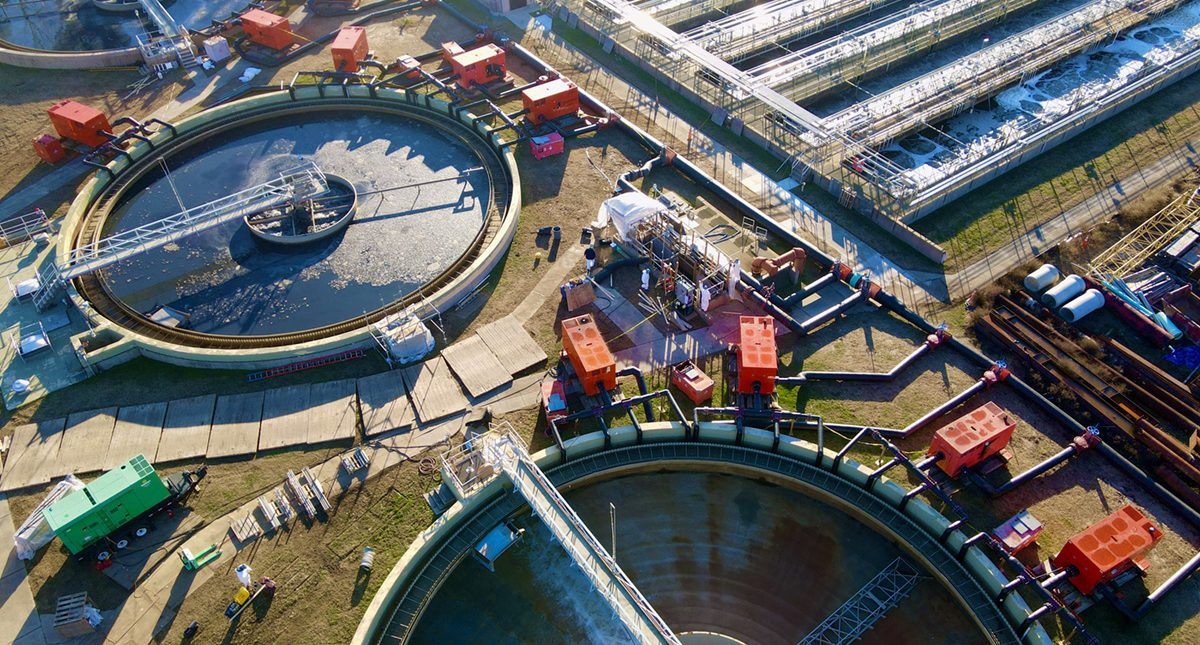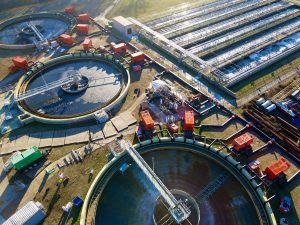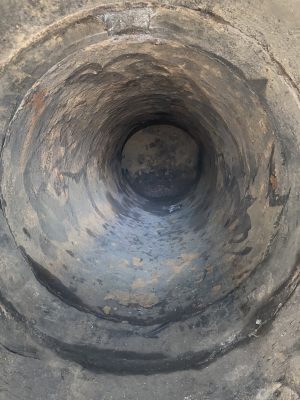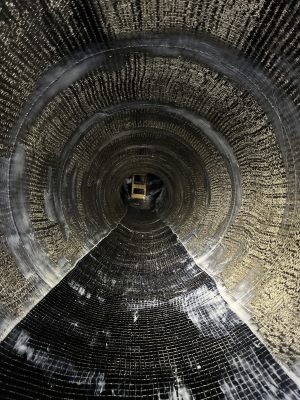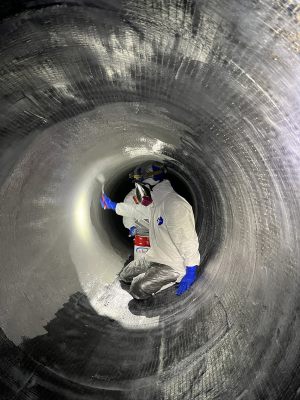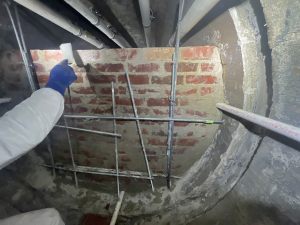York River Treatment Plant Pipe Rehabilitation
- Plant treatment capacity of 24 MGD
- 60-inch diameter effluent pipe
- 957 linear feet of pipeline repaired
Solutions: StrongPIPE® V-Wrap™ Carbon Fiber System
Location: Yorktown, VA
Owner: Hampton Roads Sanitation District (HRSD)
General Contractor: STRUCTURAL
Engineer of Record: RK&K
Material Supplier: STRUCTURAL TECHNOLOGIES
Design: SGH
The York River Treatment Plant—one of 14 vital wastewater treatment facilities operated by the Hampton Roads Sanitation District (HRSD) in Southeastern Virginia—supports a treatment capacity of 24 million gallons per day (MGD), serving thousands of residents in the region.
Following Hurricane Sally, the plant experienced a crown corrosion failure in its 60-inch diameter headworks effluent pipe. In response, HRSD inspected 900-feet of downstream primary clarifier (PC) influent and effluent PCCP, which prompted assessment of all pipelines. Revealing significant corrosion altering pipe geometry and disrupted flow, a capital improvement project was initiated.
Faced with the challenge of restoring structural integrity without disrupting operations, HRSD turned to cutting-edge technology. After evaluating both rehabilitation and replacement options, STRUCTURAL TECHNOLOGIES’ StrongPIPE® V-Wrap™ Carbon Fiber System was determined to be the most effective solution. Engineered for maximum strength and long-term durability, this trenchless solution allowed crews to rehabilitate the pipeline with minimal disruption.
The treatment’s operational limits required a carefully staged approach which included a bypass system to temporarily redirect wastewater away from the sections under repair. STRUCTURAL, an exclusive licensee of STRUCTURAL TECHNOLOGIES, installed the V-Wrap™ across three pipe sections, covering a total of 957 linear feet. In addition, the team performed concrete repair to deteriorated concrete chambers, as well as abandonment of expansion piping.
Through collaboration, this complex repair project was performed in just six months—half the scheduled time. The result? A 50-year service life extension for a pipeline that’s critical to the plant’s operations and the region’s environmental health.

